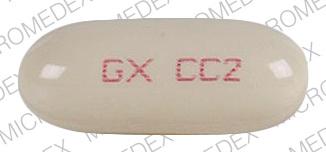Amprenavir and Alcohol/Food Interactions
There is 1 alcohol/food/lifestyle interaction with amprenavir.
Amprenavir Food/Lifestyle
Moderate Food Interaction
GENERALLY AVOID: Administration with a high-fat meal may decrease the oral bioavailability of amprenavir. The mechanism is unknown. In healthy volunteers, consumption of a standardized high-fat meal decreased the peak plasma concentration (Cmax) and area under the concentration-time curve (AUC) of amprenavir (1200 mg single oral dose) by 36% and 21%, respectively, compared to administration in the fasted state. The time to reach Cmax (Tmax) was increased 44% following a high-fat meal.
Grapefruit juice does not appear to significantly affect the pharmacokinetics of amprenavir. In 12 healthy volunteers, administration with grapefruit juice (200 mL) decreased the mean peak plasma concentration (Cmax) of amprenavir (1200 mg single oral dose) by 22% compared to water. The median time to reach Cmax (Tmax) was prolonged from 0.75 to 1.13 hours. These pharmacokinetic changes are not thought to be clinically significant, since antiretroviral response is more closely associated with systemic exposure (AUC) and trough plasma concentration (Cmin), which were not affected in the study.
MANAGEMENT: Amprenavir may be taken with or without food, but should not be taken with a high-fat meal.
References (2)
- (2001) "Product Information. Agenerase (amprenavir)." Glaxo Wellcome
- Demarles D, Gillotin C, Bonaventure-Paci S, Vincent I, Fosse S, Taburet AM (2002) "Single-dose pharmacokinetics of amprenavir coadministered with grapefruit juice." Antimicrob Agents Chemother, 46, p. 1589-1590
Switch to consumer interaction data
Amprenavir drug interactions
There are 535 drug interactions with amprenavir.
Amprenavir disease interactions
There are 5 disease interactions with amprenavir which include:
More about amprenavir
- Check interactions
- Compare alternatives
- Side effects
- Dosage information
- During pregnancy
- Drug class: protease inhibitors
Related treatment guides
Drug Interaction Classification
| Highly clinically significant. Avoid combinations; the risk of the interaction outweighs the benefit. | |
| Moderately clinically significant. Usually avoid combinations; use it only under special circumstances. | |
| Minimally clinically significant. Minimize risk; assess risk and consider an alternative drug, take steps to circumvent the interaction risk and/or institute a monitoring plan. | |
| No interaction information available. |
See also:
Further information
Always consult your healthcare provider to ensure the information displayed on this page applies to your personal circumstances.


